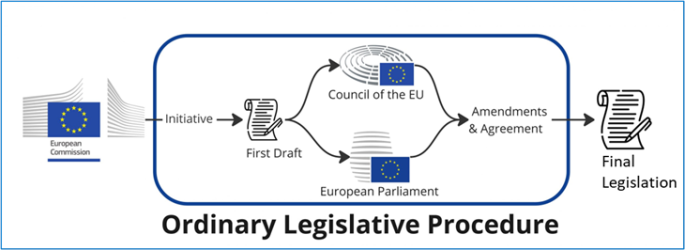This is blog post #16 in our series on the GDPR.
At Runbox we are always concerned about data privacy – “privacy is priceless” – and we put some effort into keeping ourselves updated on how the EU’s General Data Protection Regulation (GDPR) affects privacy related issues.
That’s because we want to be prepared in case something happens within the area that will affect the Runbox organization, our services, and consequently and most important: our customers.
Update 2023-08-06
On 10 July the European Commission adopted its adequacy decision for the EU-US Data Privacy Framework and announced a new data transfer pact with the United States. See the full text here: COMMISSION IMPLEMENTING DECISION.
A flyer from the European Commission is also available, and a summary of the situation is available from Reuters.
The Austrian non-profit organization NOYB, chaired by Maxmillian Schrems, stated:
“We now had ‘Harbors’, ‘Umbrellas’, ‘Shields’ and ‘Frameworks’ – but no substantial change in US surveillance law. The press statements of today are almost a literal copy of the ones from the past 23 years. Just announcing that something is ‘new’, ‘robust’ or ‘effective’ does not cut it before the Court of Justice. We would need changes in US surveillance law to make this work – and we simply don’t have it.“
“We have various options for a challenge already in the drawer, although we are sick and tired of this legal ping-pong. We currently expect this to be back at the Court of Justice by the beginning of next year. The Court of Justice could then even suspend the new deal while it is reviewing the substance of it.” [source]
The last words are obviously not said.
Originally published 2023-03-19
The case of EU-US data transfer is highly relevant because Runbox has an organizational virtual modus operandi, and that this could lead to an opportunity to involve consultants that are residing in the US. We know that many of our customers are as concerned as we are about data privacy, so we believe it is pertinent to share our findings.
In blogpost #15 in our series of the GDPR we referred to the Executive Order signed by US President Joe Biden on 07 October 2022. This happened six months after the US President and the President of the EU Commission Ursula von der Leyen with much publicity signed the Trans-Atlantic Data Privacy Framework on 25 March 2022.

In this blog post we will take a closer look at the Trans-Atlantic Data Privacy Framework, and the process thereafter.
Trans-Atlantic Data Privacy Framework
The objective of the Framework is to (re)establish a legal (with regards to the GDPR) mechanism for transfers of EU personal data to the United States, after two former attempts (Safe Harbour and Privacy Shield) were deemed illegal by the Court of Justice of the European Union (CJEU).
The Framework ascertains United States’ commitment to implement new safeguards to ensure that ‘signals intelligence activities’ (SIGINT, intelligence-gathering by interception of signals) are necessary and proportionate in the pursuit of defined national security objectives. In addition, the Framework commits the US to create a new mechanism for EU individuals to seek redress if they believe they are unlawfully targeted by signals intelligence activities.
Following up the 25 March 2022 Biden–von der Leyen agreement, the US president signed on the 7 October 2022 the Executive Order (EO) ‘Enhancing Safeguards for United States Signals Intelligence Activities’.
US compliance with the GDPR
Subsequently a process was initiated on 13 December 2022 within the EU Commission to assess whether the US, after the implementation of the EO, will meet the requirements qualifying the US to the list of nations that is compliant with the GDPR Article 45 “Transfers on the basis of an adequacy decision”. That is, whether the European Commission has decided that a country outside the EU/EEA offers an adequate level of data protection. To those countries, personal data may be transferred seamlessly, without any further safeguard being necessary, from the EU/EEA.
Inclusion of the US on that list is of course very important, not least for companies like Facebook and Google, and US companies offering cloud-based services as well. The Court of Justice of the European Union (CJEU) has deemed earlier transfer schemes (Safe Harbour and Privacy Shield) illegal, so “the whole world” is waiting for the EU Commission’s adequacy decision.
This came, as a draft, 14 February 2023 where the Commission concludes (page 54) that “… it should be decided that the United States ensures an adequate level of protection within the meaning of Article 45 of Regulation (EU) 2016/679, …)
(The figure below illustrates the “road” for legislative decisions in the EU. A more comprehensive description of the legislative procedure can be found here.)

However, the same day, 14 February 2023, the Committee on Civil Liberties, Justice and Home Affairs of the European Parliament concludes ” .. the EU-US Data Privacy Framework fails to create actual equivalence in the level of protection; ..” and “..urges the Commission not to adopt the adequacy finding;”.
Incompatible legislative frameworks
There are two important arguments, among others, behind the Commission’s conclusion: 1) There is no federal privacy and data protection legislation in the United States, and 2) the EU and the US have differing definitions of key data protection concepts such as principles of necessity and proportionality (for surveillance activities etc.), as pointed out by the Court of Justice of the European Union (CJEU).
Shortly thereafter, on 28 February 2023, the European Data Protection Board (EDPB) made public their opinion on the decision of the EU Commission regarding the adequacy. The EDPB has some concerns that should be clarified by the Commission, for instance relating to exemptions to the right of access, and the absence of key definitions.
Furthermore, the EDPB remarks that the adequacy decision is only applicable to US organizations which have self-certified, and that the possibility for redress provided to the EU data subjects in case of violation of their rights is not clear. “The EDPB also expresses concerns about the lack of a requirement of prior authorization by an independent authority for the collection of data in bulk under Executive Order 12333, as well as the lack of systematic independent review ex post by a court or an equivalently independent body.”, as stated in Opinion 5/2023.
The next step in the process is voting over the Commissions proposal in the European Parliament, probably in April, and thereafter the adequacy decision must be approved by all member states, before the EU Commission’s final decision.
The Commission may set aside the results of the voting in The Parliament, but one should expect that the critics from The Committee on Civil Liberties, Justice and Home Affairs, and the concerns of EDPB, will impact the implementation of the Framework.
Here it would be prudent to recall the statement made by the Austrian non-profit organization NOYB, chaired by Maxmillian Schrems: “At first sight it seems that the core issues were not solved and it will be back to the CJEU sooner or later.”. This refers to the verdicts of the CJEU (Court of Justice of the European Union) condemning the former frameworks Safe Harbour and Privacy Shield – the verdicts bearing the name Schrems I and Schrems II, respectively.
Bottom Line: The final outcome of the process is unclear, but in any event we have to wait for the final decision of the EU Commission.
The content of this article is intended to provide a general guide to the subject matter. Specialist advice should be sought regarding any specific circumstances.
